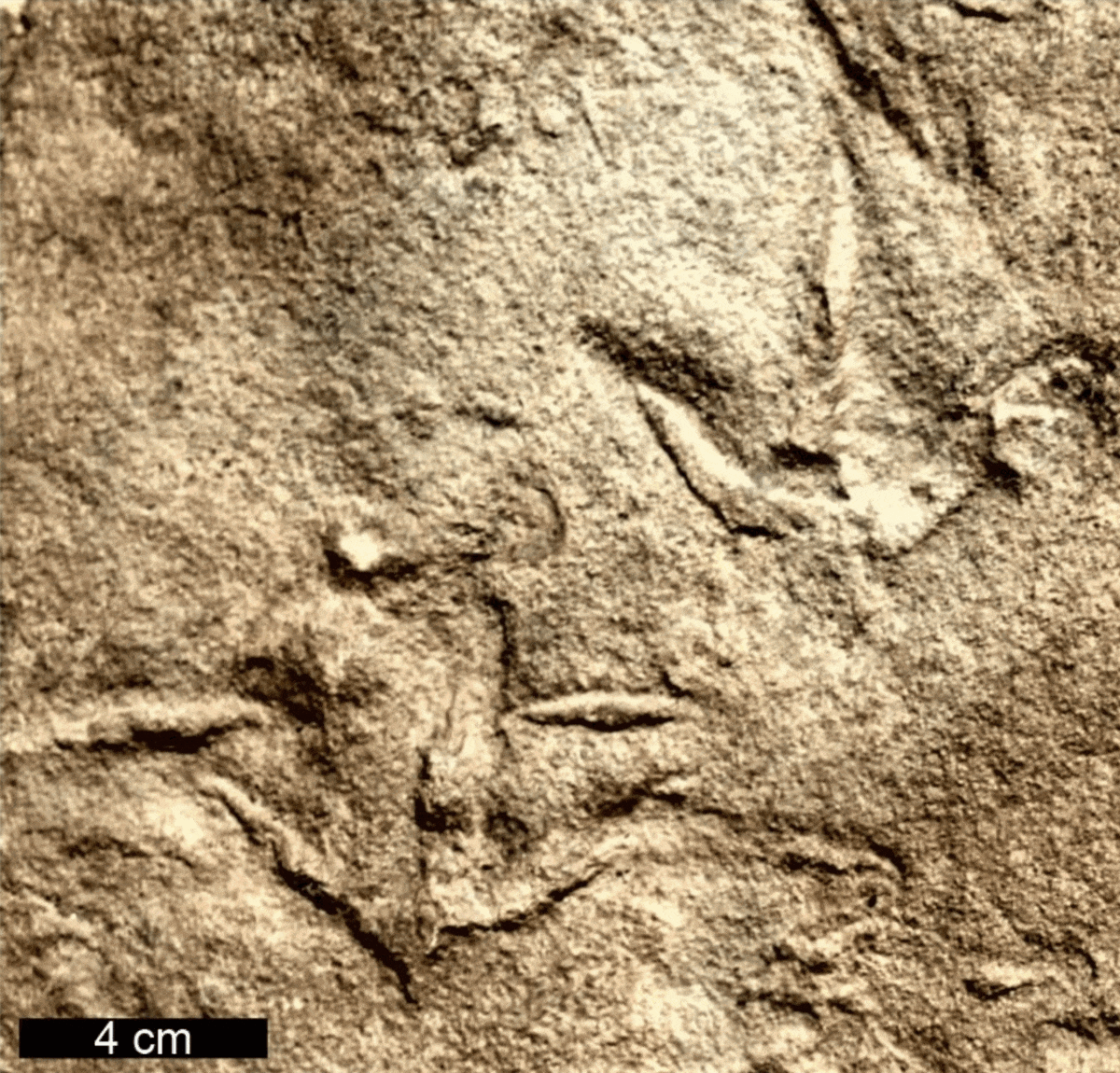Evolution
Here's What We Know About Neanderthals So Far
Today, thanks to new artifacts and technologies, findings about our closest relatives are coming thick and fast
Mysterious Creatures With Bird-Like Feet Made These Tracks Long Before Birds Evolved
The footprints pre-date the earliest known fossils of avian ancestors by roughly 60 million years, per a new study
While Some Chimps Go Low, Others Go High to Avoid a Dangerous Fight
Primate groups climb to elevation to scout out rivals and steer clear of clashes
Wild Female Chimpanzees Go Through Menopause, Study Finds
Until now, menopause had not been documented in wild, non-human animals, except for a few species of toothed whales
Can Every Living Thing Be Traced to a Single Cell? And More Questions From Our Readers
You’ve got questions. We’ve got experts
Two Million Years Ago, This Homo Erectus Lived the High Life
Dating of a child's fossilized jaw and teeth suggest our relatives lived at altitude earlier than once thought
More Mammals Can Glow in the Dark Than Previously Thought
A new study found that 125 different mammal species are fluorescent under ultraviolet light, suggesting the property is widespread
One Million Years Ago, Our Human Relatives May Have Challenged Giant Hyenas for Carcasses
Groups of hominins might have successfully scavenged large kills, new modeling finds
Songbirds That Learn to Make New Sounds Are the Best Problem-Solvers
Birds—and humans—are vocal learners, meaning they can imitate new vocalizations and use them to communicate
How a Small Snake Can Eat Meals Many Times Larger Than Its Head
The egg-eating African reptile uses its stretchy jaw skin to swallow huge prey, a feat that not even a python can match
Paleontologists Discover Mummified Bees Preserved in Their Cocoons for 3,000 Years
Some kind of "catastrophic" event, such as a sudden freeze or flood, likely killed all the young adult bees at once, according to a new study
How Color-Changing Hogfish Use Their Skin to 'See' Themselves
Light-sensitive proteins in the fish's skin could play a role in monitoring how they camouflage, researchers theorize in a new study
How These Birds Can Spot Look-Alike 'Imposter' Eggs in Their Nests
Fork-tailed drongos can identify and reject egg forgeries, laid by African cuckoos, with nearly 94 percent accuracy, new research suggests
Dolphins Use Baby Talk When Their Calves Are Around
Like humans, female dolphins make higher-pitched vocalizations when communicating with their young
Orangutans Can Beatbox, Just Like Humans
The primates can simultaneously make sounds with their mouth and throat, a finding that may shed light on the evolution of human speech
Our Human Relatives Butchered and Ate Each Other 1.45 Million Years Ago
Telltale marks on a bone from an early human’s leg could be the earliest evidence of cannibalism
Oldest Known Neanderthal Engravings Were Sealed in a Cave for 57,000 Years
The art was created long before modern humans inhabited France's Loire Valley
What the Largest-Ever Study of Primate DNA Reveals About Ourselves
The findings cover not only conservation and primate evolution, but also human health and diseases
Male Primate Masturbation May Have Evolved to Prevent STIs
The behavior originated some 40 million years ago to improve breeding success and protect against pathogens, according to a new study
Scientists Record the First 'Virgin Birth' in a Crocodile
A female American crocodile living in captivity reproduced without a mate—a finding that suggests dinosaurs might have done the same thing
Page 4 of 42
:focal(800x602:801x603)/https://tf-cmsv2-smithsonianmag-media.s3.amazonaws.com/filer_public/1a/3f/1a3f8bfd-6bb5-4c3b-9cad-0186bd75439c/1_neanderthal-museum-cc_web.jpg)

:focal(800x602:801x603)/https://tf-cmsv2-smithsonianmag-media.s3.amazonaws.com/filer_public/88/dc/88dcd051-f42b-40b8-8c75-54d9163a3c4e/listening-to-other-chimps-croman-wittig-tcp_web.jpg)
:focal(1200x880:1201x881)/https://tf-cmsv2-smithsonianmag-media.s3.amazonaws.com/filer_public/8c/13/8c134de2-1108-4190-89f9-0a7e9197960f/gettyimages-52695441.jpg)
:focal(446x335:447x336)/https://tf-cmsv2-smithsonianmag-media.s3.amazonaws.com/filer_public/9f/5e/9f5e4a1e-8730-4c7a-98b5-e1622684253a/ask.jpg)
:focal(800x602:801x603)/https://tf-cmsv2-smithsonianmag-media.s3.amazonaws.com/filer_public/c6/8e/c68efc49-3e1e-4a28-a23e-96bc012fa622/mussi-add9115-image-3_web.jpg)
:focal(807x415:808x416)/https://tf-cmsv2-smithsonianmag-media.s3.amazonaws.com/filer_public/ec/6d/ec6d48a7-7aa6-4ec0-80c7-5ca7735e5066/rsos230325f02.jpg)
:focal(577x434:578x435)/https://tf-cmsv2-smithsonianmag-media.s3.amazonaws.com/filer_public/01/a7/01a72ed1-d6b1-4372-ba57-c39c43df33a6/scavengers_sr_01_web.jpg)
:focal(1024x761:1025x762)/https://tf-cmsv2-smithsonianmag-media.s3.amazonaws.com/filer_public/a9/54/a9541a8c-1290-45f5-a671-d1f1f3e65cc9/blue_jay_185317371_1.jpeg)
:focal(400x208:401x209)/https://tf-cmsv2-smithsonianmag-media.s3.amazonaws.com/filer_public/1f/d3/1fd3d4a9-8b4e-4813-a41f-ea827ed9d267/egg-eater1.jpeg)
:focal(1440x878:1441x879)/https://tf-cmsv2-smithsonianmag-media.s3.amazonaws.com/filer_public/62/53/62535505-f275-4795-bdc8-5ba3af404860/bees-from-the-time-of-3.jpg)
:focal(2700x1800:2701x1801)/https://tf-cmsv2-smithsonianmag-media.s3.amazonaws.com/filer_public/08/b4/08b48f94-b447-4070-9893-0f38b1be386a/gettyimages-883223342.jpg)
:focal(1024x683:1025x684)/https://tf-cmsv2-smithsonianmag-media.s3.amazonaws.com/filer_public/95/8a/958aaf07-4830-415f-827d-922d1565a67c/2048px-dicrurus_adsimilis-01.jpeg)
:focal(512x356:513x357)/https://tf-cmsv2-smithsonianmag-media.s3.amazonaws.com/filer_public/e7/dd/e7dd7737-d9b0-4db1-83b9-843c3ae1d5f3/1024px-bottlenose_dolphin_with_young.jpeg)
:focal(1024x683:1025x684)/https://tf-cmsv2-smithsonianmag-media.s3.amazonaws.com/filer_public/36/0d/360d54ef-94e5-48fa-a181-1a1c318cf9b8/orangutan-bornean.jpeg)
:focal(800x602:801x603)/https://tf-cmsv2-smithsonianmag-media.s3.amazonaws.com/filer_public/a1/65/a165e9cc-aec1-4103-b3bd-223cc79eb9a1/a-briana-pobiner-figure-1_web.jpg)
:focal(800x602:801x603)/https://tf-cmsv2-smithsonianmag-media.s3.amazonaws.com/filer_public/f9/a1/f9a12c61-caa5-4cd1-94ac-2fcc921600c9/circ-et-ondul2dsc_2139_web.jpg)
:focal(2184x1456:2185x1457)/https://tf-cmsv2-smithsonianmag-media.s3.amazonaws.com/filer_public/96/b2/96b24a43-05c7-443d-9793-bf229f7eba02/gettyimages-72681633.jpg)
:focal(1061x707:1062x708)/https://tf-cmsv2-smithsonianmag-media.s3.amazonaws.com/filer_public/c3/65/c36539c0-9075-498c-9f00-f53cbd7fc5a6/gettyimages-1166833462.jpg)
:focal(1024x683:1025x684)/https://tf-cmsv2-smithsonianmag-media.s3.amazonaws.com/filer_public/33/13/33135ef8-4683-49af-9d49-85119e8bb0dc/44156696472_1e84980bec_k.jpg)